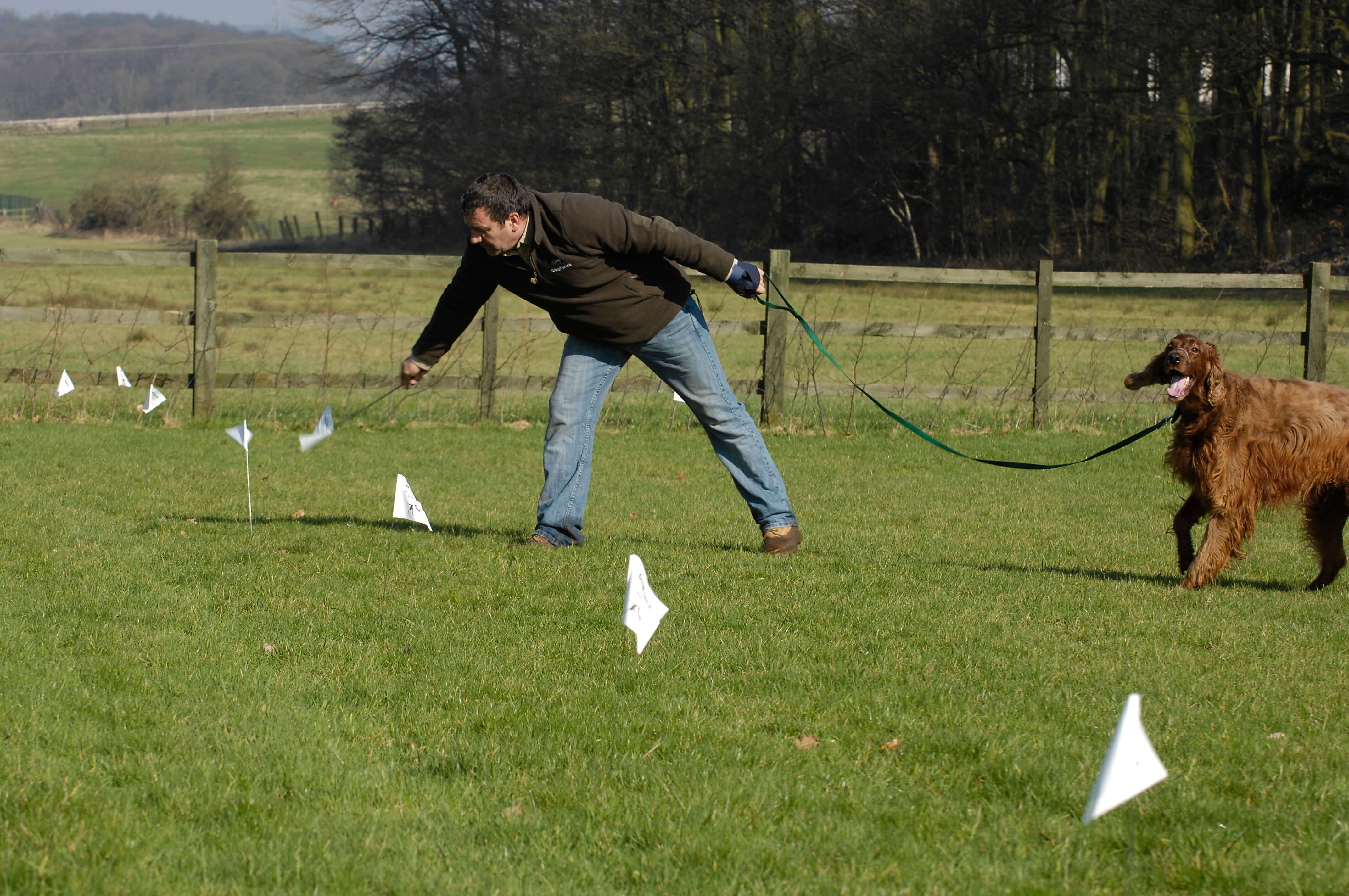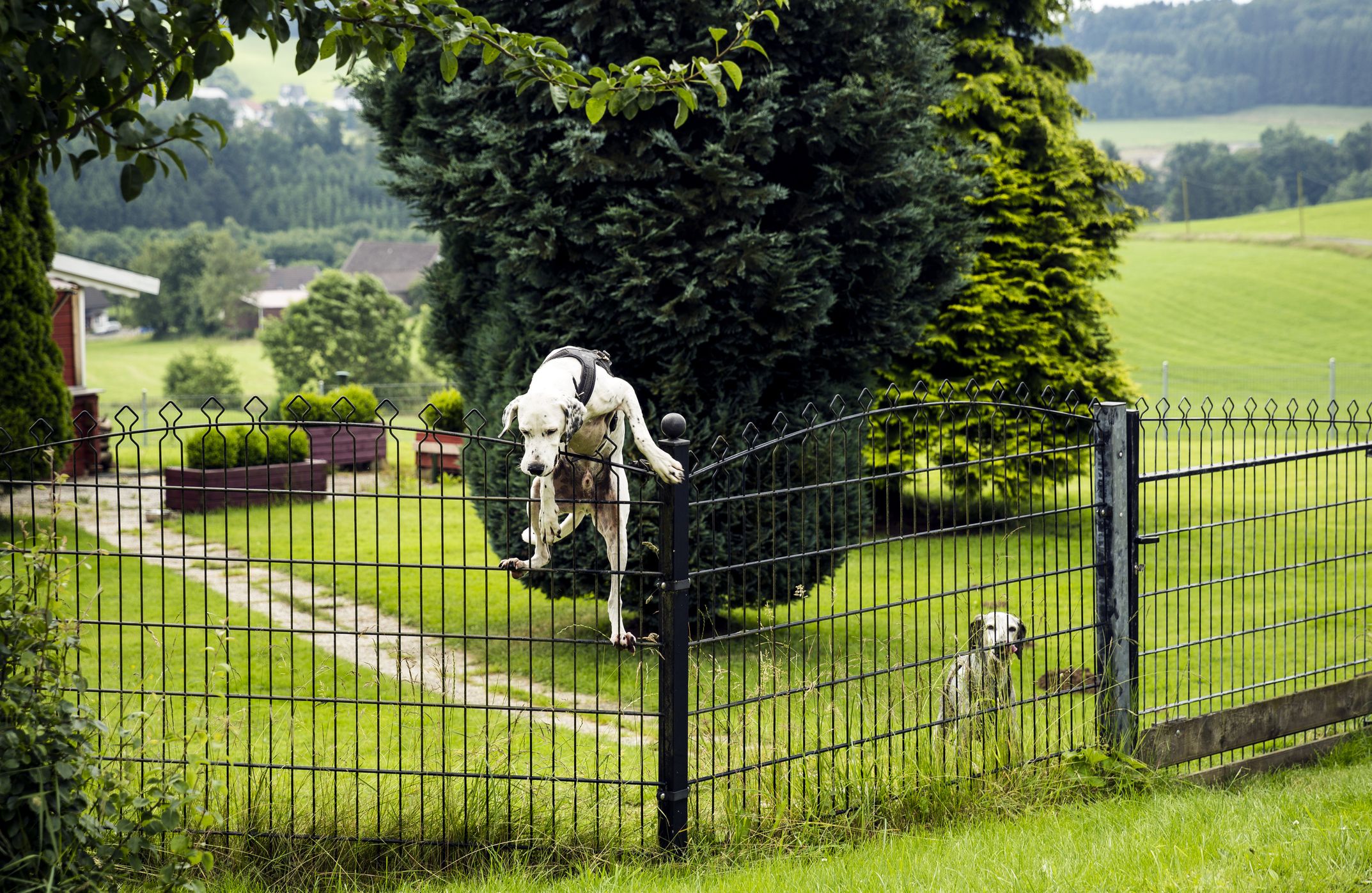Are you tired of your dog finding new ways to climb over your fence? It can be frustrating and even dangerous when your furry friend escapes your yard.
But what if there was a fun and effective way to teach your dog to respect boundaries without stress? Teaching boundary games is a simple method that helps your dog understand limits while keeping them mentally engaged. You’ll discover easy steps to train your dog not to climb fences, making your yard safer and your life easier.
Keep reading to learn how you can turn boundary training into a game your dog will love.

Credit: dogfence.co.uk
Why Dogs Climb Fences
Dogs climb fencesfor many reasons. Sometimes they want to explore new places or chase animals like squirrels. Other times, they feel lonely or bored and try to find a way out. Fear or anxietycan also make dogs climb fences to escape loud noises or strangers.
Fence climbing is risky. Dogs can hurt themselvesby falling or getting stuck. They may run into traffic or get lost, causing serious harm. Neighbors might get upset if a dog wanders into their yard. This can lead to legal problemsfor the owner.
Teaching dogs about boundaries helps keep them safe. It stops them from climbing and protects your dog and others.
Choosing The Right Boundary Game
Boundary games help teach dogs where they can and cannot go. Different types suit different dogs. Some dogs learn best with visual markerslike flags or cones. Others respond well to sound cuessuch as bells or buzzers. Some dogs need physical boundarieslike ropes or low fences to understand limits.
Choosing the right game depends on your dog’s personality. Energetic dogs might like games with sound signalsto catch their attention. Calm dogs may do better with visual signs. Shy dogs might need slow introduction to avoid stress.
| Dog Personality | Best Boundary Game Type | Why |
|---|---|---|
| Energetic | Sound Cues | Gets their attention quickly |
| Calm | Visual Markers | Easy to notice and follow |
| Shy | Physical Boundaries | Gives clear, gentle limits |
Preparing For Training
Gather treats, a leash, and clickerfor training sessions. These tools help guide your dog clearly. Choose small, tasty treatsto keep your dog interested. Use a leashto control movement safely.
Pick a quiet, enclosed areafree from distractions. This helps your dog focus on learning boundaries. Make sure the space is safe with no sharp objects or gaps in the fence. A small backyard corner works well.
Set up clear visual markerslike flags or cones. These show your dog where the boundary is. Keep markers bright and easy to see. Train near the fence line for better results.
Step-by-step Training Process
Start by showing your dog the boundary line. Walk along the fence and let the dog see where it is. Use a leashto guide your dog near the boundary.
Pick a simple commandlike “stop” or “stay” to use at the boundary. Say the command clearly and gently pull the leash back if the dog tries to cross. Use a hand signallike holding your palm out to stop.
Give your dog a treator praise when it stays inside the boundary. Repeat this often to build good habits. Avoid punishment; reward helps your dog learn better.
Practice this daily. Keep sessions short and fun. Gradually let the dog try without a leash but watch closely.
Troubleshooting Common Issues
Distractionslike birds or cars can make dogs ignore boundary rules. Start training in a quiet place. Slowly add distractions over time. Use treats and praise to keep their focus. Short sessions work best to hold attention.
Some dogs are stubbornand resist learning boundaries. Patience is key. Repeat lessons calmly and often. Try changing the reward if one doesn’t work. Use a firm, gentle voice to guide them.

Credit: www.whole-dog-journal.com
Maintaining Boundary Behavior
Regular practice sessionshelp dogs remember boundaries clearly. Keep sessions short, about 5 to 10 minutes, so dogs stay focused. Use treats and praise to reward good behavior near the fence. Practice at different times and in various weather to build strong habits. Consistency is key. Dogs learn best with daily, calm training.
Adjusting trainingis important as dogs improve. Watch for signs of boredom or confusion. Change commands or rewards to keep dogs interested. Some dogs need more practice; others less. Always be patient and positive. Training is a step-by-step process. Stay flexible and ready to try new methods if needed.
Additional Tips For Fence Safety
Physical fence improvementscan stop dogs from climbing. Adding taller fencesor solid panelshelps. Use materialsthat dogs cannot grip easily. Installing angled extensionsat the top also works well.
Supervisionis key during outdoor time. Watch your dog closely near the fence. It helps catch any climbing attempts early. Regular exercisereduces boredom. Tired dogs are less likely to try climbing. Play with your dog daily to keep them busy and happy.

Credit: www.amazon.com
Frequently Asked Questions
What Are Boundary Games For Dogs?
Boundary games teach dogs to respect fence lines through play. These games reinforce safe zones and discourage climbing or escaping. They use positive reinforcement to make boundaries clear and enjoyable for your dog.
How Do Boundary Games Prevent Fence Climbing?
Boundary games create clear limits dogs learn to obey. By rewarding staying inside boundaries, dogs avoid climbing fences. This method reduces anxiety or boredom that often cause fence climbing.
When Should I Start Teaching Boundary Games?
Start boundary games as early as possible, ideally with puppies. Early training builds good habits and prevents fence climbing before it begins. Consistency is key for effective boundary training.
What Equipment Is Needed For Boundary Games?
Basic equipment includes a leash, treats, and a safe fenced area. Optional items are boundary markers or flags to visually define limits. These tools help dogs understand and respect boundaries.
Conclusion
Teaching boundary games helps dogs respect fences and stay safe. It keeps your pet from climbing or escaping. Regular practice builds good habits and trust. Dogs enjoy clear rules and praise. This method creates a calm and controlled environment. You protect your dog and your yard.
Simple steps lead to long-term success. Patience and consistency work best every day. A happy dog means less stress for you. Try boundary games to keep your dog close and secure.





